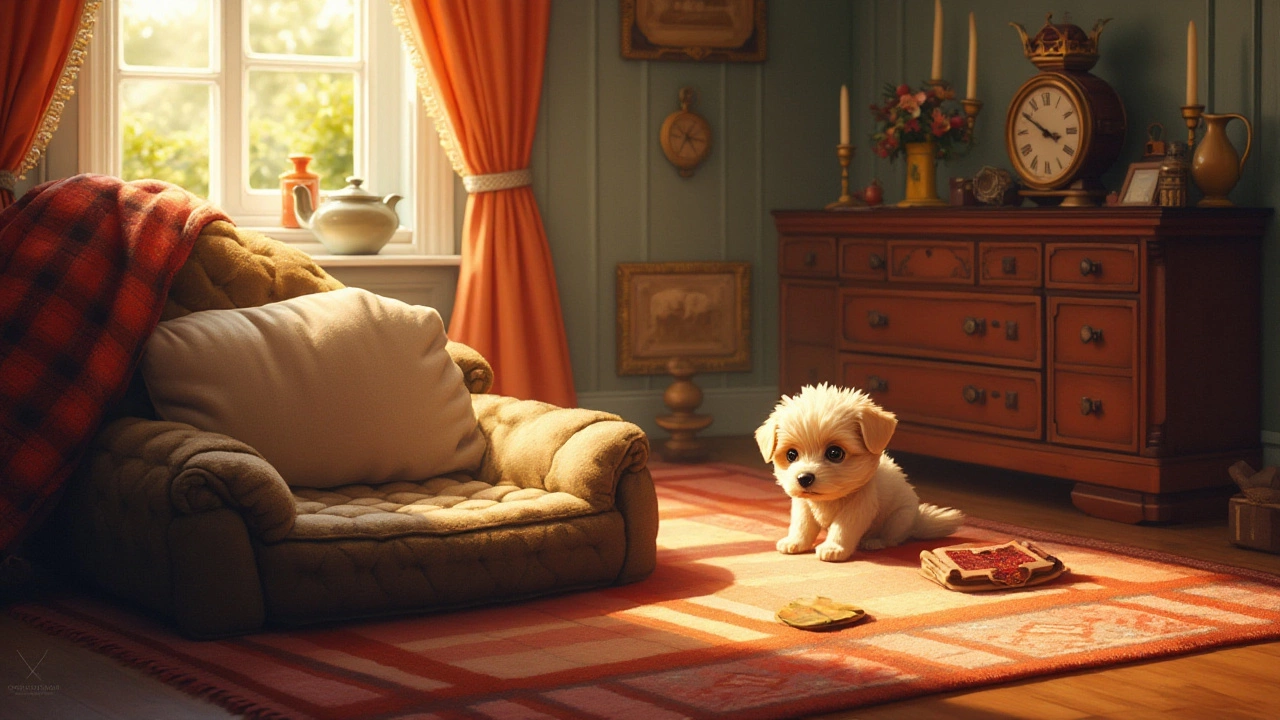Puppy Survival Tips: What Every New Owner Needs Right Now
Got a fresh‑off‑the‑shelter pup and feeling a bit overwhelmed? You’re not alone. The first weeks are full of tiny accidents, sleepless nights, and endless questions. Below are the practical steps that will turn chaos into confidence, so you and your puppy can enjoy this exciting time together.
Set Up a Safe Crate Space
Think of a crate as a puppy‑proof bedroom. Choose a size that lets your pup stand, turn around, and lie down comfortably. Add a soft blanket and a chew‑safe toy. Put the crate in a quiet corner, but keep it close enough to hear whines. When you first introduce it, toss a treat inside and praise the moment they step in. This teaches the crate as a happy place, not a punishment.
Resist the urge to use a pee pad inside the crate during the night. Pee pads delay potty training because the puppy learns it’s okay to relieve themselves in the same spot. Instead, stick to a schedule: take the pup out right before bedtime, then once at 3‑4 am if needed. Consistency will make the nights smoother for both of you.
Feeding Basics and Nutrition
Start with a high‑quality puppy food that meets AAFCO standards. Measure out the recommended portion for your pup’s age and weight, and split it into three to four small meals a day. Puppies have tiny stomachs and need steady energy. Keep fresh water available at all times, but avoid letting the bowl sit in direct sunlight.
If you’re curious about human foods, remember that most aren’t necessary and some can be harmful. A spoonful of plain Greek yogurt can be a probiotic boost, but only a few teaspoons and only once a week. Always check with your vet before adding anything new.
Health Checks and Vaccinations
The first vaccine schedule is a must‑have survival tip. Core shots usually start at six to eight weeks and repeat every three to four weeks until the puppy is 16 weeks old. Keep a simple chart on the fridge: vaccine name, date given, and next due date. This visual reminder helps you stay on top of the plan.
While you’re at the vet, ask about deworming, flea prevention, and a basic health exam. Early detection of parasites or ear infections saves money and keeps your pup comfortable.
Managing Biting and Chewing
Puppies explore the world with their mouths, so biting is normal. When they nip, let out a brief “ouch” and withdraw your hand. Offer a chew toy instead. Rotate toys every few days to keep interest high. If a chew toy starts to break apart, replace it immediately—small pieces can become choking hazards.
Teething usually peaks around four to six weeks. A frozen carrot or a chilled rubber toy can soothe sore gums. Avoid using your hands as chew targets; it encourages a habit that’s hard to break later.
When Can Your Puppy Free‑Roam?
Most experts say wait until the pup is at least 12 weeks old and fully vaccinated before letting them roam unsupervised. Even then, start with short, leash‑guided sessions inside the house. Gradually increase the area as you see the puppy respond well to commands like “come” and “stay.”
Set clear house rules early: no jumping on furniture, no chewing on cords, and a designated “go‑to” spot for rainy days. Consistency in rules makes the free‑roam transition smoother and keeps your home safe.
Bottom line: the best survival tips are simple routines, clear boundaries, and plenty of love. Follow the steps above, stay patient, and you’ll watch your puppy grow from a wobbly bundle of fur into a confident, well‑behaved companion. Happy training!
Surviving the First 48 Hours with Your New Puppy
Bringing home a new puppy can be both exciting and overwhelming, but with the right preparation, you can ease the transition for both you and your furry friend. This guide provides essential information and practical tips for navigating the first 48 hours with a new puppy, including setting up their space, understanding their needs, and establishing a routine. Learn how to handle common challenges like sleep disruption, feeding schedules, and puppy-proofing your home. By following these steps, you can ensure a smoother adjustment period and start building a loving bond with your canine companion from day one.
